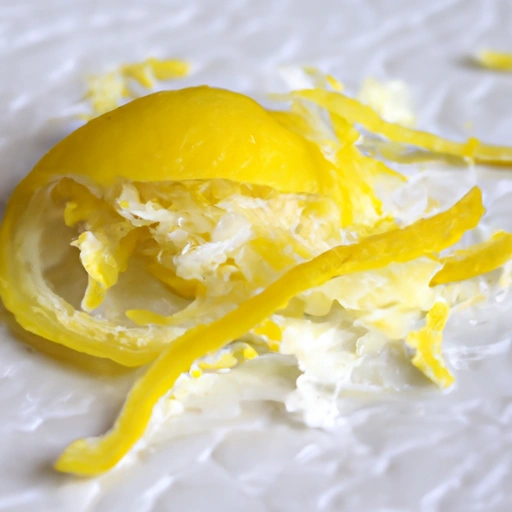Lemon Rind
Description

Lemon rind, also known as lemon zest, is the outermost layer of the lemon's peel. It contains the fruit's essential oils, which are responsible for its intense citrus aroma and flavor. The rind is typically grated, zested, or peeled from the lemon and used in a variety of culinary applications. When using lemon rind, it's important to remove only the colored portion of the peel, as the underlying white pith can be quite bitter. In recipes, the amount of lemon rind is usually specified in teaspoons or tablespoons, which translate to about 5 grams or 0.18 ounces per teaspoon and 15 grams or 0.53 ounces per tablespoon. In European units, this is approximately 5 milliliters per teaspoon and 15 milliliters per tablespoon.
Common uses
Lemon rind is widely used to impart a bright, zesty flavor to a variety of dishes. From baking to cooking, it can be found in cakes, cookies, marinades, dressings, and more. It's also a popular ingredient in cocktails, teas, and other beverages where a hint of citrus is desired.
Nutritional value
Calories
Lemon rind is low in calories, with approximately 6 calories per tablespoon (15 ml).
Protein
It contains a negligible amount of protein.
Fat
Lemon rind has a minimal fat content, with less than 1 gram per tablespoon (15 ml).
Carbohydrates
Carbohydrates in lemon rind are primarily in the form of dietary fiber, with about 1 gram per tablespoon (15 ml).
Vitamins
It is rich in vitamin C and also contains small amounts of vitamins B6 and A.
Minerals
Minerals present in lemon rind include calcium, potassium, and magnesium in trace amounts.
Health benefits
The use of lemon rind can contribute to overall health due to its high vitamin C content, which supports the immune system. The rind also contains flavonoids and antioxidants that may have anti-inflammatory and anticancer properties.
Potential risks
When using lemon rind, it's essential to source organic lemons or thoroughly wash the skin to remove any pesticide residues or waxes. Consuming large quantities of lemon rind can also lead to digestive issues due to its high fiber content.
Common recipes
Lemon rind is featured in recipes like lemon meringue pie, lemon loaf, gremolata, and various sauces. It's also used in seasoning blends for fish, poultry, and vegetables.
Cooking methods
It can be used fresh, dried, or candied, and is often added at the end of cooking to preserve its delicate flavor.
Pairing with other ingredients
Lemon rind pairs well with herbs like rosemary and thyme, berries, chocolate, and seafood.
Summary
Lemon rind is a versatile and flavor-packed ingredient that enhances both sweet and savory dishes. Its rich nutritional profile and potential health benefits make it a valuable addition to various recipes, while its vibrant taste contributes to the depth of flavors in culinary creations.